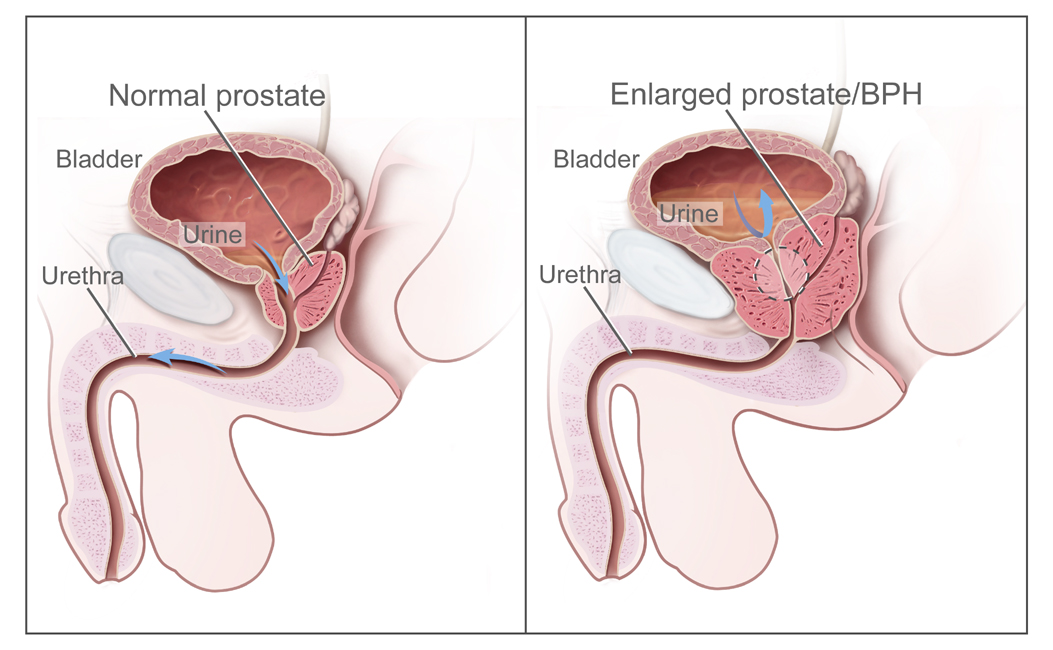Prostatic Hyperplasia, Benign

Description
Benign prostatic hyperplasia (BPH) refers to the nonmalignant growth of the prostate gland, and is histologically defined as hyperplasia of the prostate gland. BPH is an age-related phenomenon in men beginning at about age 40 years. BPH may result in prostatic enlargement and clinical symptoms most commonly affecting the lower urinary tract. These symptoms may be obstructive, including hesitancy, weak flow, and urinary retention, or irritative, including increased frequency and urgency. However, not all men with histologic BPH will develop prostatic enlargement or urinary symptoms (review by Roehrborn, 2005).
InheritanceSanda et al. (1994) performed a family study of early-onset benign prostatic hyperplasia (in the past inappropriately known as benign prostatic hypertrophy). They used as probands men in the youngest quartile (less than 64 years of age) from 909 consecutive prostatectomies for BPH. Large prostate was defined as greater than 37 gm resected tissue. Control probands, selected because of the ability to distinguish treatment for benign prostatic disease from treatment for malignant prostatic disease, were women whose spouses underwent radical prostatectomy during the same interval. Male relatives of men with early onset of BPH had a 66% cumulative lifetime risk of prostatectomy for BPH, compared to a 17% cumulative risk among control relatives (p = 0.0001). A 4-fold increase in age-specific risk of prostatectomy for BPH was present among relatives of young men who had undergone prostatectomy for BPH (p = 0.0003), while brothers of these affected men had a 6-fold increase in risk (p = 0.0089) compared to controls. Although the small sample size prevented rigorous exclusion of nongenetic models, direct comparison of mendelian and nongenetic models showed that mendelian transmission provided the best overall explanation of the observed familial aggregation. Autosomal dominant inheritance provided the best fit on segregation analysis.
Biochemical FeaturesCannon et al. (2007) examined serum JM27 (PAGE4; 300287) levels from 29 patients with asymptomatic benign prostatic hypertrophy, 39 patients with severe symptomatic BPH, and 17 patients with confirmed prostate cancer. Men with severe symptomatic BPH had significantly lower levels of JM27 compared to those with asymptomatic BPH (p less than 0.0001). Sensitivity and specificity of the assay were 90% and 77%, respectively, and positive and negative predictive values were 74% and 91%, respectively. Prostate volume and presence of prostate cancer did not appear to alter the marker levels. Cannon et al. (2007) concluded that BPH is not a single disease entity, but that there are distinct forms of the disease, including asymptomatic and more aggressive forms with severe urinary problems. Patients with the more aggressive form may develop more bladder damage and may benefit from earlier medical or surgical intervention.